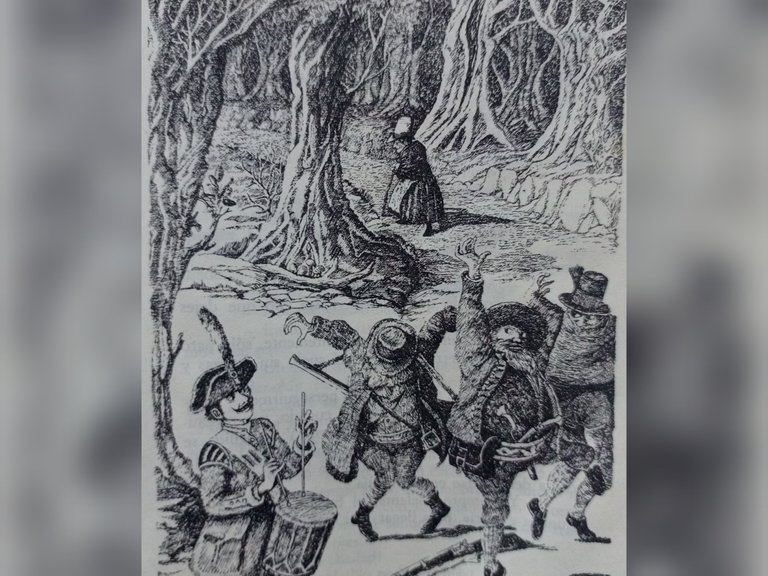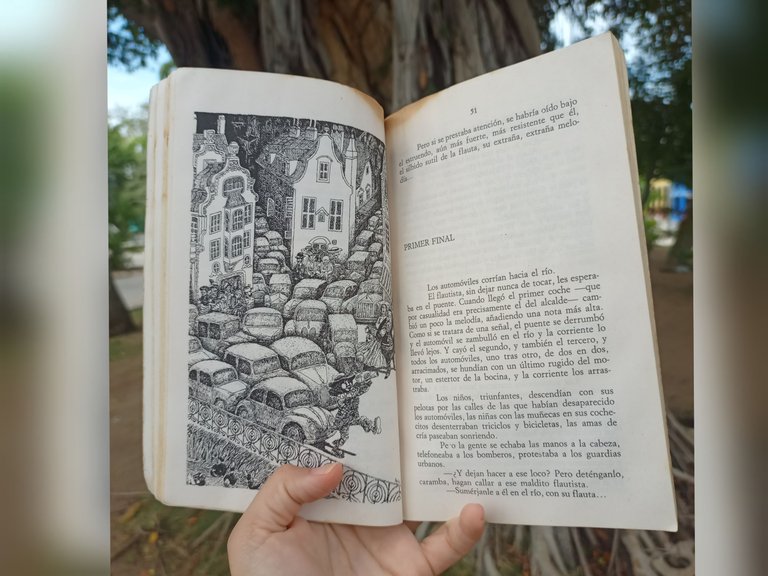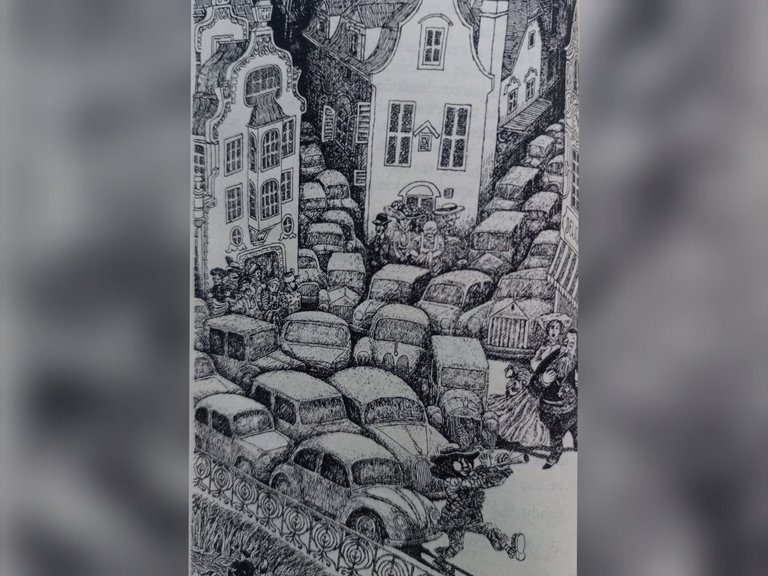In the search for new children's stories I have found a treasure, a literary journey through the work of Gianni Rodari. The book Stories to play with is an anthology of stories that I would like to crumble gradually, like someone who tastes a delicious dessert, in search of savoring its ingredients, nuances and textures.
This Italian writer has a great trajectory in children's and young people's literature, he was also an educator, hence his interest in stimulating the imagination of children and teaching them to create with words. I recently reviewed his book Grammar of fantasy, where he offers a compendium of techniques for creating stories. In Stories to play with, on the other hand, the author, in addition to a story, offers three endings for the reader to choose the one he or she likes best. He even gives the reader the freedom to create another one, either written or with drawings.

Given their aesthetic and pedagogical richness, in the following lines I will deal with three stories. I consider the exhibition worthy, because they can serve as a bridge to show children new universes to explore. The first story is called The magic drummer, here we find an enchanted drummer, every time he beats his drum, everyone will have to dance without being able to stop. He is rewarded with this gift for being generous, hence this quality can get him out of "trouble" when he needs it most. The child reader, in the alternative endings, is presented with using the gift to steal, do good with the drum or indulge curiosity. These scenarios allow for reflection while leaving some learning that goes hand in hand with morals, ethics and good manners.

On the other hand, in Pinocchio, the sly one, the first lines are striking and comical, since the narrator explains that this character is not the same Pinocchio known to all, even though they share many traits. Rodari's Pinocchio is made of wood, he grows a nose for lying, but he is greedy. Being a liar makes him a millionaire, his lumber company is the most successful in town. However, he is not satisfied with all his fortune and wishes to have more, hence he hired a "Suggestor" to write the lies for him. If we go into the depths of the story, we analyze that telling lies is like building a house of cards, sooner or later the wind will blow and the foundations will inevitably collapse.

I found this to be one of the best stories in the book because the author uses the real Pinocchio as a reference, which is why he uses only one reference. The narration, like the character, wanders through imagination and exaggeration, presenting situations that are not very credible and absurd, but valid for this free version, whose final options include one that involves Carlos Collodi himself.

The third tale is entitled The Pied Piper and the Automobiles and, like Pinocchio, it uses The Pied Piper of Hamelin, whose authorship is by the Brothers Grimm, as a reference character. However, in this tale we do not have a plague of rats but of automobiles, although it may seem illogical. Here we can notice a social criticism towards modernity, the attachment to material things and pollution. Cars steal people's space, affecting the healthy recreation of children, who cannot run, have fun and play. Through the chaos, the narrator shows us a society where having a car is more important than enjoying life.

I enjoyed reading Stories to play with because it gives us tools for children to have fun while learning. I consider this approach brilliant because it is a different way of approaching education. Undoubtedly, its author uses the tools he proposes in his book Fantasy Grammar, showing us here his methodology. Therefore, it is a very useful book for classroom work, when teaching reading, because these stories based on others, represent sources of inspiration to create and dream.
Versión en EspañolEn la búsqueda de nuevos cuentos infantiles he hallado un tesoro, un viaje literario por la obra de Gianni Rodari. El libro Cuentos para jugar es una antología de historias que me gustaría desmenuzar paulatinamente, así como quien degusta un delicioso postre, en búsqueda de saborear sus ingredientes, matices y texturas.
Este escritor italiano posee una gran trayectoria en literatura infantil y juvenil, además, fue educador, de allí su interés por estimular la imaginación de los pequeños y enseñarlos a crear con palabras. Recientemente reseñé su libro Gramática de la fantasía, donde nos ofrece un compendio de técnicas para crear cuentos. En cambio en Cuentos para jugar, el autor, además de un relato, nos ofrece tres finales para que el lector escoja el que más le agrade. Incluso, le da la libertad de realizar otro ya sea escrito o con dibujos.

Dada su riqueza estética y pedagógica, en las próximas líneas abordaré tres cuentos. Considero meritoria la exposición, pues pueden servir de puente para mostrar a los niños nuevos universos por explorar. El primer relato se denomina El tamborilero mágico, acá nos encontramos con un tamborilero encantado, cada vez que redoble su tambor, todos tendrán que bailar sin poder detenerse. Él es premiado con este don por ser generoso, de allí que esta cualidad pueda sacarlo de "apuros" cuando más lo necesite. Al niño lector, en los finales alternativos, se les presenta usar el don para robar, hacer el bien con el tambor o dar rienda a la curiosidad. Estos escenarios permiten reflexionar mientras dejan algunos aprendizajes que caminan de la mano con la moral, la ética y las buenas costumbres.

Por su parte, en Pinocho, el astuto llama la atención sus primeras líneas, que resultan cómicas, pues el narrador nos explica que este personaje no es el mismo Pinocho conocido por todos, aún cuando comparten muchos rasgos. El Pinocho de Rodari es de madera, le crece la nariz por mentir, pero es codicioso. Ser un mentiroso lo vuelve millonario, su maderera es la más exitosa del pueblo. Sin embargo, no se conforma con toda su fortuna y desea tener más, de allí que contrató a un "Sugeridor" para que escriba las mentiras por él. Si nos adentramos en las profundidades del relato, analizamos que decir mentiras es construir un castillo de naipes, tarde o temprano soplará el viento y las bases inevitablemente se derrumbarán.

Este me pareció uno de los mejores relatos del libro porque el autor utiliza como referente al auténtico Pinocho, por tal razón se vale de un único referente. La narración, al igual que el personaje, se pasea por la imaginación y la exageración, presentando situaciones poco creíbles y absurdas, pero válidas para esta versión libre, entre cuyas opciones para su final se incluye una que involucra al propio Carlos Collodi.

El tercer cuento se titula El flautista y los automóviles y, al igual que Pinocho, se utiliza como personaje referencial a El flautista de Hamelin, cuya autoría recae en los Hermanos Grimm. No obstante, en este cuento no tenemos una plaga de ratas sino de automóviles, aunque parezca ilógico. Acá se puede notar una crítica social hacia la modernidad, el apego por lo material y la contaminación. Los autos le roban el espacio a las personas, afectando el sano a esparcimiento de los niños, quienes no pueden correr, divertirse y jugar. A través del caos, el narrador nos muestra una sociedad donde tener un carro es más importante que disfrutar la vida.

Me gustó leer Cuentos para jugar porque nos ofrece herramientas para que los niños se diviertan mientras aprenden. Considero este enfoque brillante porque es una forma distinta de abordar la educación. Sin duda, su autor utiliza las herramientas que propone en su libro Gramática de la fantasía, mostrándonos aquí su metodología. Por tanto, resulta un libro muy útil para el trabajo en aulas de clases, a la hora de enseñar a leer, porque estas historias basadas en otras, representan fuentes de inspiración para crear y soñar.
✓Photos from my personal gallery, edited with Fotocollage.
✓Text translated with DeepL.
🌟📚🌟📚🌟📚🌟📚🌟📚🌟
✓Fotos de mi galería personal, editadas con Fotocollage.
✓Texto traducido con DeepL.
Posted Using INLEO